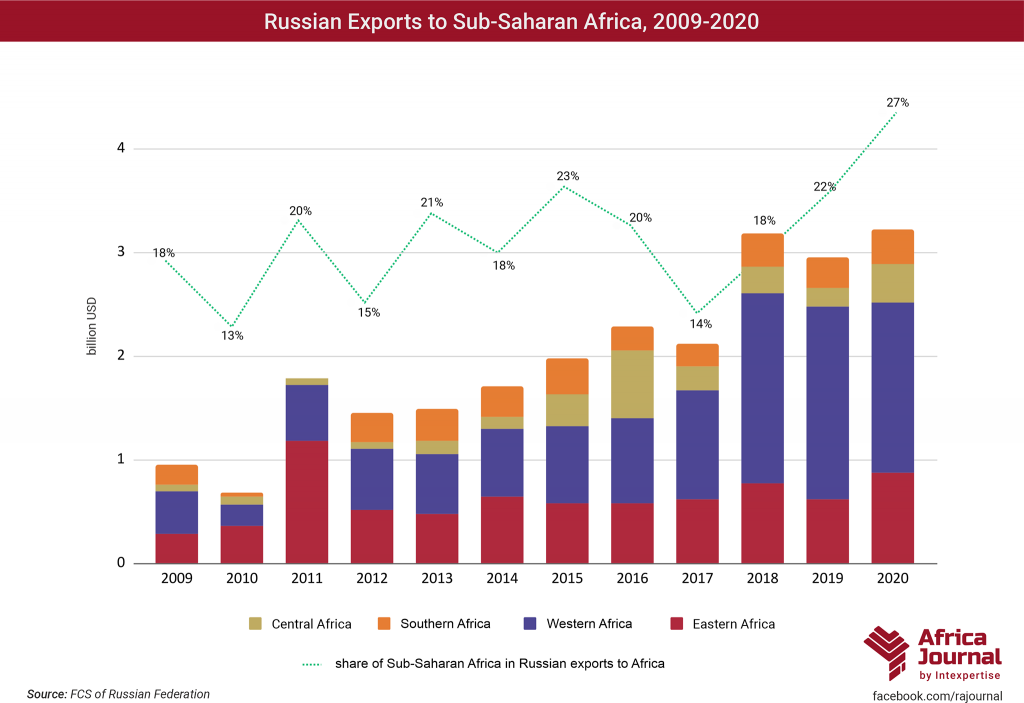
Russian exports to Sub-Saharan Africa set a historical record of $3.2 billion in 2020 ($2.9 billion in 2019). In 2019, they represented 22% of Russia’s total export to Africa, in 2020 it achieved a 5 percentage point increase.
All parts of Sub-Saharan Africa except for Western Africa have recorded a growth in Russian exports, while exports to Central Africa have even doubled, reaching $360 million.
Western Africa has historically been the major export destination for Russia. However, in 2020 Russian exports there declined by $200 million, which was mainly due to the decline in supplies of petroleum products to Senegal and Togo. Again this category is heavily reliant on oil prices — the lower the price is, the lower the exports are in terms of value.
At the same time, exports to Nigeria and Niger increased by $40 and $50 million, respectively. In the case of Nigeria, it is due to the growth of supplies of cereals and black metals, while exports to Niger grew by “Secret code” supplies. Exports to Niger probably concern the supply of two Mi-35 military helicopters under the contract of 2016. At the Russia-Africa Summit in 2019 the Deputy Director of the Federal Service of Military-Technical Cooperation of Russia reported that the supply was “expected shortly”.
The increase of the share of Sub-Saharan Africa in Russian exports to Africa is an indication of trade diversification, as these countries’ imports represent mostly non-energy and non-commodity imports. Its significant share is taken by cereals, automobiles and black metals, fertilizers, fats and oils, copper, wood, electrical machinery, inorganic chemicals, paper, railway and locomotives, boilers.
This is a ‘technical’ growth due to the sharp decline of Russian exports to Egypt and Algeria in the respective years. In the last decade, this share stood around 20%. Nevertheless, what is worth mentioning is the steady growth of the absolute value of Russian supplies to Sub-Saharan, and especially Western Africa. The growth would have been even more impressive if Russian exporters had used opportunities to penetrate the markets of Eastern Africa, which have consistently been growing at higher than average rates than the rest of Africa
Andrey Maslov, an expert of the Center for African Studies, HSE
